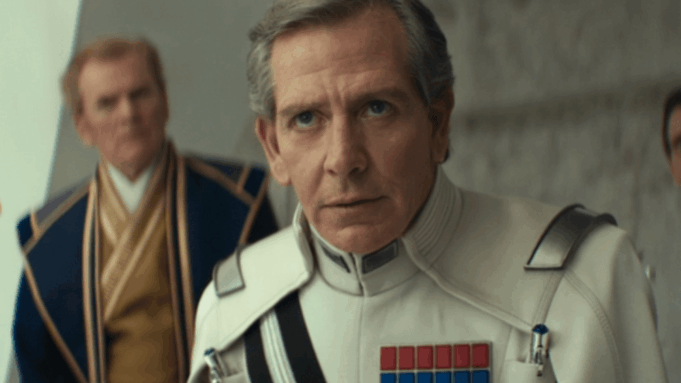SPOILER ALERT: This story discusses plot developments through Season 2, Episode 6 of “Andor,” currently streaming on Disney+.
Ben Mendelsohn cannot sit still. We’re talking via Zoom about his return to the role of Orson Krennic, the villain in the 2016 standalone “Star Wars” film “Rogue One,” for the second season of Lucasfilm’s prequel series “Andor” — and he is so exuberant about the experience that he keeps pacing throughout his London home as we talk. The Emmy-winner isn’t exactly sure when “Andor” creator and “Rogue One” screenwriter Tony Gilroy first approached him about playing Krennic again, but he does know it was before he’d had a chance to see Season 1 of the show — not that that dampened his enthusiasm.
“Tony just said, ‘Would you be amenable to coming back and just doing a few scenes?’” Mendelsohn recalls. “To which I was like, ‘Fuck yeah, absolutely.’”
Krennic’s appeared sparingly on “Andor” this season, and each time, it’s packed a punch. In Episode 1, he secretly meets with Imperial officers to plan the seizure of the planet of Ghorman for a rare mineral demanded by the Emperor. (Krennic’s stated reason is that the mineral is needed to develop a renewable power source, but thanks to “Rogue One,” we know his real job is managing the creation of the Empire’s top secret ultra-weapon, the Death Star.) Krennic doesn’t appear again until Episode 6, when he encounters Senator Mon Mothma (Genevieve O’Reilly) and the secret mastermind of the Rebellion, Luthen Rael (Stellan Skarsgård), while touring a private antiquities gallery during a lavish party. Krennic delights in taunting Mothma about the nature of rebellions as everyone around him laughs politely, without realizing that Luthen’s assistant, Kleya (Elizabeth Dulau), is quietly removing a listening device in the same room.
In both episodes, Krennic asserts his authority with ease and charm — a sharp contrast from “Rogue One,” in which he’s repeatedly undermined by Grand Moff Tarkin and Darth Vader, and is ultimately vaporized by a blast from the Death Star. As he explains in our interview, Mendelsohn relished the opportunity to explore more about his character; he also discusses how making “Andor” has deepened his appreciation for “Rogue One,” his feelings about the many real-world historical parallels to the show, and whether there’s any possibility of playing the character again.
When were you first approached about reprising Krennic for “Andor”?
Quite a while ago, not that long after the first season. Tony just said, “Would you be amenable to coming back and just doing a few scenes?” To which I was like, “Fuck yeah, absolutely.” “Michael Clayton” is somewhere in my 25 most-loved films of all time. And Krennic and the whole “Star Wars” experience was a really good one for me. But I had no idea how good it was going to be. It’s taken me by joyous surprise.
This sounds like it was before you’d seen Season 1?
Yeah, yeah.
Love Film & TV?
Get your daily dose of everything happening in music, film and TV in Australia and abroad.
So what was your reaction to the show, knowing you were going to be a part of Season 2?
Oh, well, “Andor” is such a brilliantly crafted and mature take on that universe. When these super brains decide to tackle one of the genres, like a horror genre or a science fiction genre, they just bring so much to it. The Gilroys as a family are able to do high concept stuff in a way that is really digestible and fun.
What did you know about Season 2 going in?
Tony laid out the concept, his historical parallels, etc, etc. Then it was one of those things where you really only get your scenes. And then — [long, deep laugh] — then you try and slot it in as best as you can.
Wait, what was that laugh about?
Well, the fact that — and I think I’m remembering this correctly — you’re not even aware of everything else that’s going on. I mean, I get where they’re coming from, but you go in there doing your piece of the jigsaw puzzle.
How would you compare what we see of Krennic in Season 2 of “Andor” versus what we see of him in “Rogue One”?
When we see him in “Rogue One,” we see him at the pinnacle of his achievement, but we also see him at the time when the other marshals of the Empire are going, “That looks pretty good. I think perhaps that’s actually my department now.” So he’s a lot more animated by that, you know, and obviously the great secret being that Galen Erso is the creator of the Death Star. Although I will never let go of the idea that I built the Death Star. It’s just it’s too good of a line.
You see him in more of a halcyon period [in “Andor”]. This is him still very much ascendant. He’s fruitier at this period.
Sorry, he’s “fruitier”?
Yeah! There’s a sort of a sense of him strutting around a bit more, and enjoying himself more. He’s having a better time here. He’s conducting an operation which he feels completely mathematical about. He’s completely horrifying in a way that he’s not in “Rogue One.” Because I think the show is quite horrifying. We’ve never taken it to that kind of place, in such a fulsome way as we are here. It’s never been quite so grown up and full bodied in that way.
Krennic’s meeting in Episode 1 with Imperial officers, including propaganda officials, has been compared to the Nazi’s planning the Final Solution at the Wannsee Conference. How much were you looking at those kinds of historical parallels for your performance?
I didn’t research it outside of a rough idea. I mean, I’m relatively well-versed in a good deal of the Second World War period. I think the device of reformulating people that you intend to make war on in one way or another is something that we see again and again. There’s the most glaring and obvious historical example, but I’m too sensitive to the internal integrity of the possibilities of the piece to be so blunt as to point at one place or another. But I think for any audience with a sensitivity to that, they’re going to see that it repeats itself in history, seemingly ad infinitum.
How did it feel for you to explore a different dimension of Krennic? In “Rogue One,” he’s rarely the most important person in the room, and he’s almost always on the back foot — whereas on “Andor,” it’s quite the opposite.
It was very satisfying. It was something of my request, but I think that it would have fallen that way anyway. As I say, it was nice to play him as a clear master of that domain. It was a lot more fun to do.
In Episode 6, we see Krennic in a social situation with civilians like Mon Mothma and Luthen Rael. What was that like to film?
I think that took a little longer to find a groove with, because, Genevieve and I had not spent any screen time together, but [our characters] knew each other for a very long time. Stellan’s character and I obviously don’t really have anything to do with each other, other than these sort of passing ships in the night. But it was enjoyable, faffing around with the tension that’s going on there, and, of course, what’s really going on the other side of the room.
It seems like you shot a lot more of Krennic’s conversation while the scene shifts to Kleya trying to remove the listening device?
Yeah, that’s true. We were aware at the time we were shooting it, that a lot of it is stuff that’s going on in the background, etc, etc. There is more dialogue that’s more to do with a taunting and baiting thing about her sort of intransigence and her sort of silly, anti-Imperial stylings, how ineffectual they are, how debased they are etc., etc. There’s quite an airy sense in Krennic at this time. He’s very aware of the hand he’s holding, and of how much she’s been undermined. That one felt like we shot for days, as you do when there’s a lot of people talking in a lot of different angles.
Did you rewatch “Rogue One” to prepare?
Oh, no, no, no, no. It’s just the scenes and the situation which really guide exploring him in different circumstances. It’s nothing particular in my effort other than, I don’t know, a certain je ne sais quoi, an attitude or whatnot.
I’m asking because I’m wondering if making “Andor” has reframed Krennic or any part of “Rogue One” for you?
I think it adds an enormous amount of gravitas to “Rogue One” — and “Rogue One” had a lot of gravitas. But “Andor” takes that and cubes it. I mean, I watched the first film in the cinema. I was eight years old or something, and I heard [makes a sound of a starship flying] come over the top of me, and it blew my head off. All my chips were in immediately. When we were talking about “Rogue One,” I think it mattered to all of us that we honored what it what it meant to us and what it did to us. So that I know that we’ve kicked a goal [with “Andor”].
I mean, it’s incredibly sophisticated, right? But it’s still very, very easy to digest. Now, I will refrain from the most grand sort of comparison, but great writing does that. It’s accessible to those that sitting right up the front in the old fashioned theater, and by those sitting up the back — for the kids, for the adults. I don’t know how they do it. I’m a veteran of the Australian film and television world from nigh on 40-odd years. So being on a horse that’s coming in strong is something you appreciate. And that’s the thing. I’m on a horse. It’s not me. It’s like, “Wow, look at this amazing creature.”
Is there anything else that you’d like to know? I know I have a reticence in certain areas. I tread lightly, and I know that’s not necessarily that satisfying for copy. Is there anything you’d like to circle back on?
You may be the first person who’s ever asked me that. I am curious about one more thing: Tony Gilroy’s been clear that this show was always going to head straight into “Rogue One.” And we all know what happens to Krennic in that movie.
Well, we think we do. [Bursts into laughter.] Please go on. I’m just trying to talk to Bob Iger there — just sending a little message out to Bob.
That’s actually was I was trying to get at. Watching “Andor,” it does seem like there could be more to explore with this character if he wasn’t seemingly obliterated by the Death Star.
One of the deeply satisfying things is to have people start ranking him, you know, in the hierarchy of villainy. My quip about him previously was he’s a middle-manager in the Empire. It’s not necessarily the most attractive sort of résumé for a villain. But the amount of meat that Tony put on the bones, I do think that the machinations that happen inside the Empire — the power struggles, that sort of stuff — can be endlessly fascinating. I mean, look, the simple fact of the matter is with the recent applications of AI, who knows? To paraphrase James Bond, never say never again.
This interview has been edited and condensed.
From Variety US































